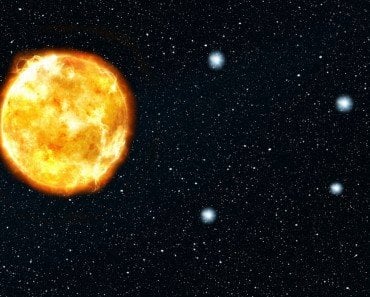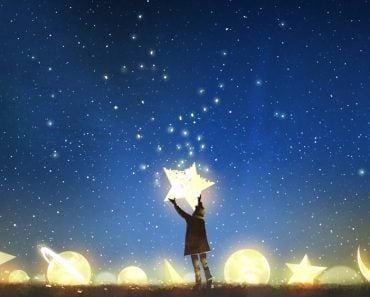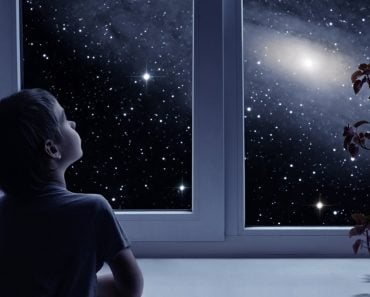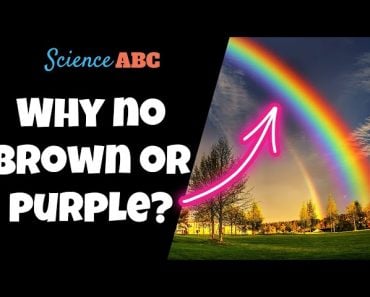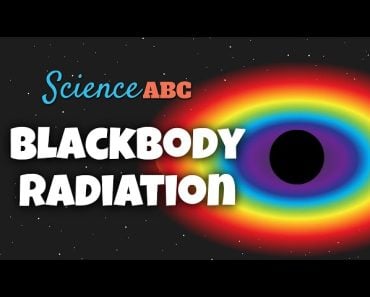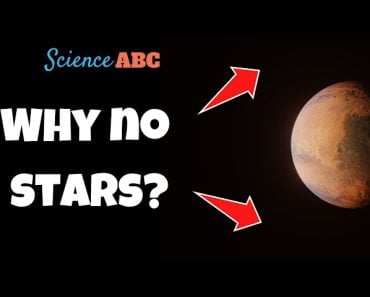The color of stars is due to their chemical composition, temperature, age, and relative motion with respect to Earth.
If you’re an avid stargazer like me, you have surely noticed one extraordinary thing about the stars in the night sky… they twinkle in beautiful different colors!
Do you know why the stars come in so many different colors?
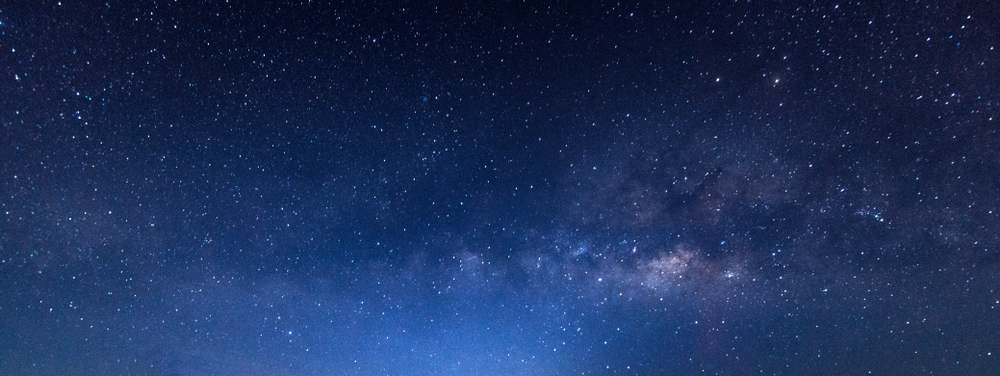
To begin the journey of finding the answer to this question, we should begin with the star we know best—our Sun!
Due to our Earth’s atmosphere, we see our Sun as yellow, and sometimes red, or even orange! However, it is actually white or close to white in color. We will learn more about this at the end of our quest for answers.
One fun fact about the color of our Sun is that it will not remain the same forever. Someday, far in the future, when it will have run out of Hydrogen (its fuel), it will enter the red giant phase. As that name suggests, it will quite literally puff up into a giant red star, ready to explode!
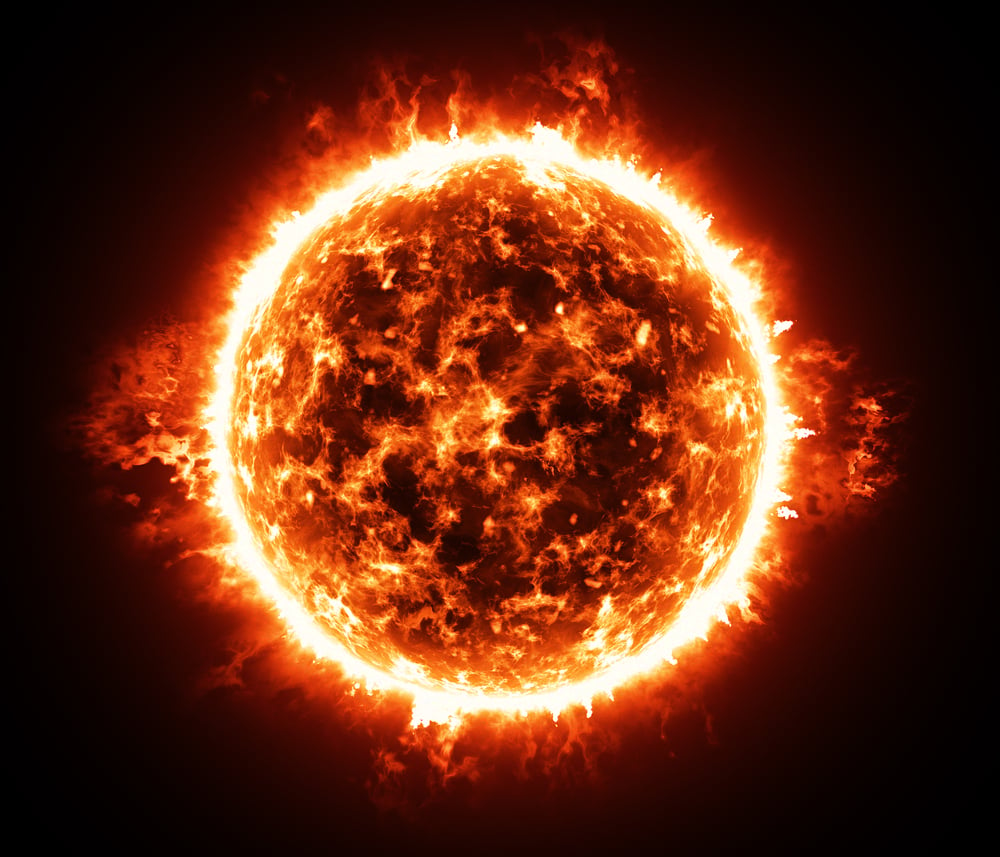
Recommended Video for you:
How Does Temperature Affect A Star’s Color?
So, what is it that changes over time that affects the color of the star? The answer is temperature. You see, at the end of its lifetime, a star will have exhausted its fuel and therefore reduced in temperature. Less energy being produced means a lower frequency of light being emitted, which corresponds to the red side of our visible spectrum. So, when a star starts cooling, its emitted radiation leans more toward the red side.
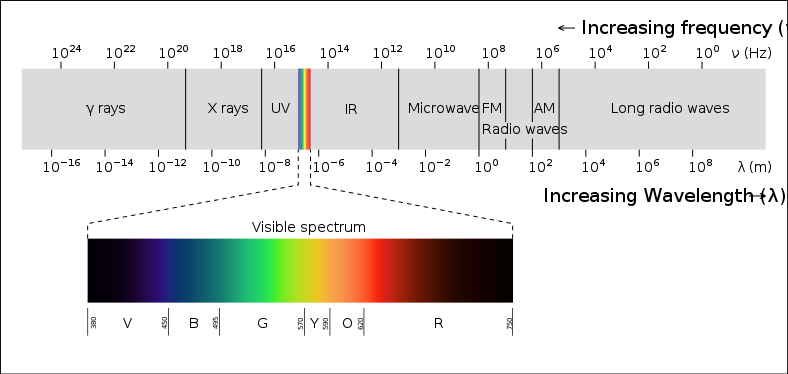
You might be wondering if red corresponds to cool, then does blue correspond to hot? Yes! The hottest stars appear blue, as their radiation emitted is leaning more toward the blue part of the spectrum.
This relation between temperature and emitted radiation is such an important and special feature of stars that astronomers Ejnar Hertzsprung and Henry Norris Russell independently came up with a classification of stars based on this variable in the 1900s. This relation is sketched in a graph that they called the Hertzsprung-Russel diagram, where the temperature is plotted against luminosity or the color of the star.
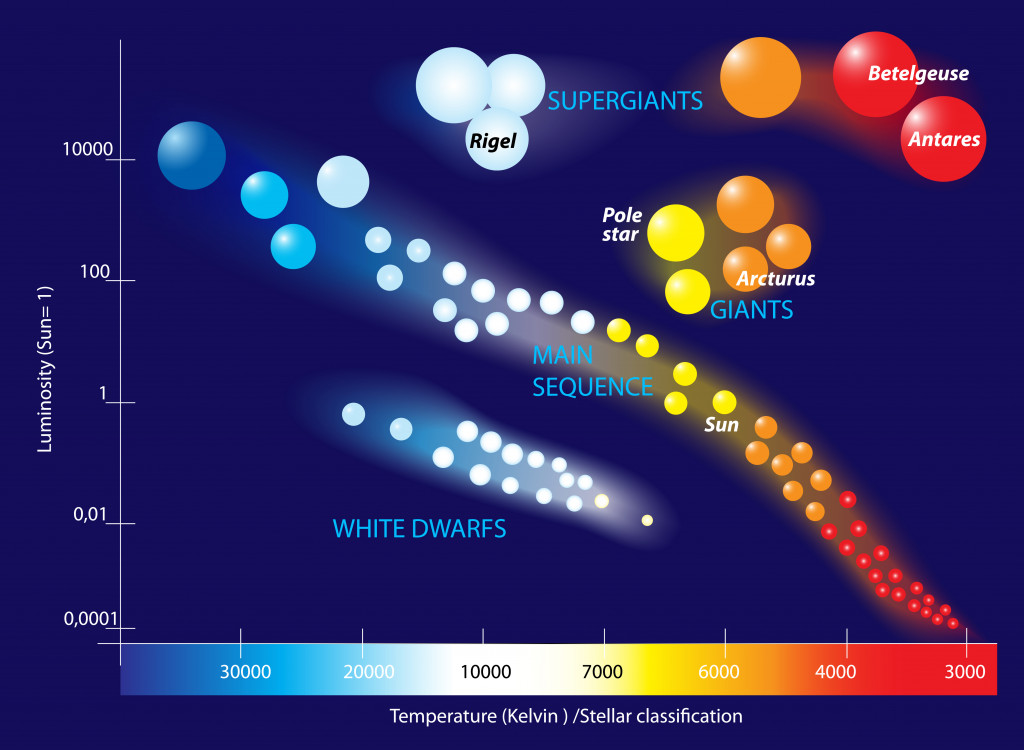
We can see a very obvious implication from this graph—the temperature-color correlation. The hotter stars lie in the blue part of the diagram, whereas the cooler stars lie in the red. This graph not only helped classify the stars, but also helped understand their evolution and is therefore very important.
Moving Stars Have Different Colors Too?
Temperature is not the only factor that makes a star lean towards red or blue! We know that our Sun is moving at a very high speed in our galaxy, as are all the stars we see in the night sky.
However, some of them might be moving away, while others might be moving towards us. Believe it or not, this also affects the color of these stars.
If a star is moving away, the light emitted by it shifts toward the red part of the spectrum, but if it is moving towards us, its light will shift towards the blue part of the spectrum. This effect is called the Doppler effect and is extremely important while processing images from telescopes.
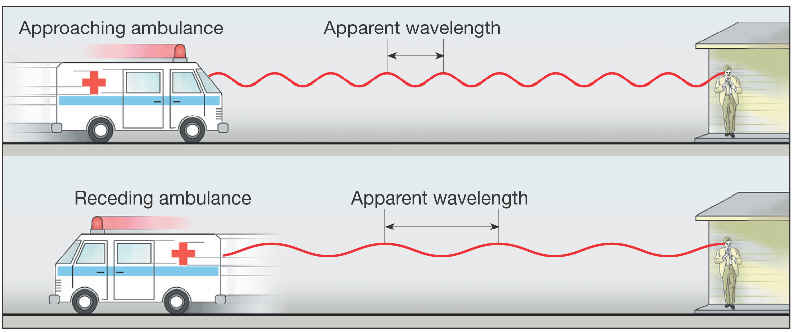
Now, we’re not quite done… there is still one very important factor that is affecting the color of a star. That is its composition. Or simply put, the different elements that make up the star affect the color!
How Does The Composition Add Color To A Star?
If you take a look at the picture below, you will see beautiful flames in varying colors. These colors are caused by the burning of different metals in air. Each of these flames is uniquely colored because they emit radiation at a certain frequency/wavelength. Thus, their emitted radiation becomes a very characteristic feature of each metal and helps identify them via spectroscopy. More importantly for us, they sometimes add to the color of the stars.
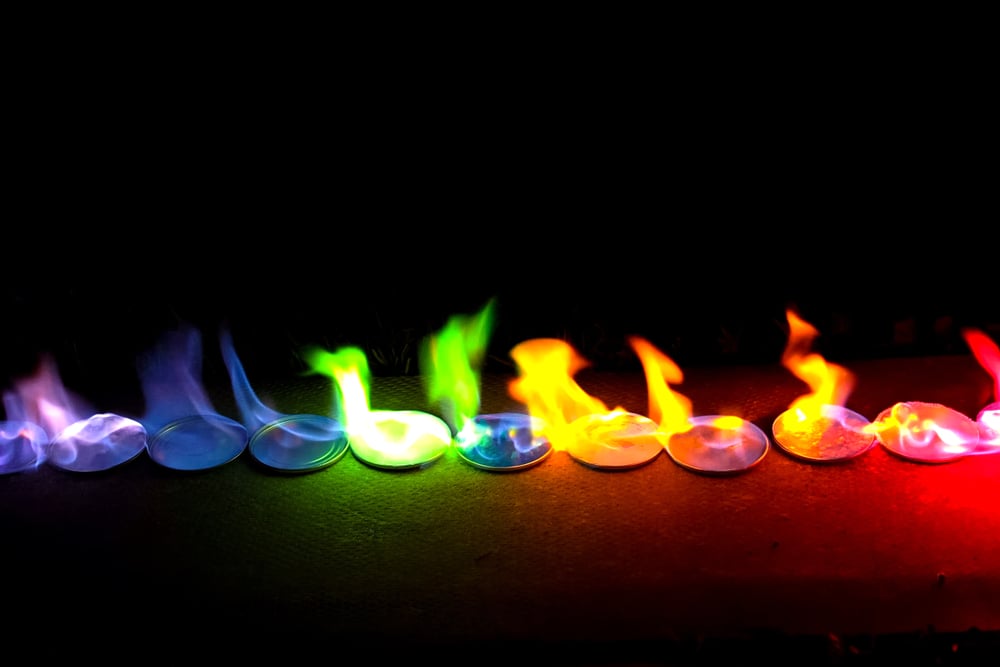
Now, let’s be clear. The metals that the stars are made of are not burning by the same reaction as what is occurring on the earth. However, their radiation is still very characteristic of them, so we use their emission frequencies to identify which metal is being consumed, created or simply present inside the stars.
It also helps us understand what point in its life cycle the star might be in. This is because, as the star ages and all the Hydrogen is consumed by nuclear fusion, heavier metals start fusing.
The very first stars in the universe did not contain any metal in them when they formed. They were just composed of Hydrogen. Other metals were formed inside these stars as they burned through their fuel. So, when they died and ejected their metals into space, these metals became part of the building blocks for the next generation of stars. Thus, the successors will have a higher metal content than their predecessor stars. This is an important concept while studying the histories of galaxies.
Now, you might be wondering why we don’t actually see colors, such as the green flame in the image, in any of the stars in the night sky. Well, that’s a valid question. For that, we will go back to a statement made earlier in this article. Remember, the color of the Sun was actually white or close to white.
Why Are There No Green-colored Stars?
Our Sun actually emits radiation of all colors in the visible spectrum, but of all the colors, it slightly prefers green. What I mean is that there is more green than any other color in the emitted radiation of our Sun. So… shouldn’t we see it as green?
Well, the thing is that green lies right in the middle of the visible spectrum. It is surrounded by other colors and also composed of other colors. Therefore, for it to be seen alone, it must come alone. However, since it comes along with the emission of other colors of the visible spectrum as well, we see it as white (a combination of all the colors) more than green in outer space. Of course, on Earth, it appears yellow due to our atmosphere.
Similarly, we don’t see green stars because the green radiation is also accompanied by other colors, which all adds up to white. Again, green isn’t the only color we don’t see stars in. We cannot see a number of other colors, especially near the blue part of the spectrum, such as violet, and purple, as our eyes are more sensitive to blue light and will perceive these colors as blue instead.
Now you know everything there is to know about the colorful stars in the night sky. I hereby declare the end of our quest! Whenever you see a starry sky with twinkling colorful stars, remember how unique each one is!
References (click to expand)
- Chapter 6: Aging Into Gianthood | Life and Death of a .... The National Aeronautics and Space Administration
- Composition of Stars - Astrophysics Science Division - NASA. The National Aeronautics and Space Administration
- Hertzsprung-Russell Diagram | COSMOS. The Centre for Astrophysics and Supercomputing



